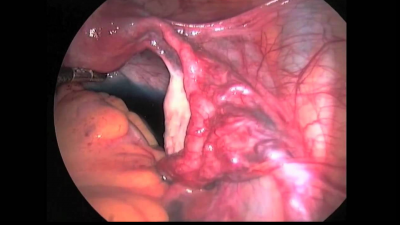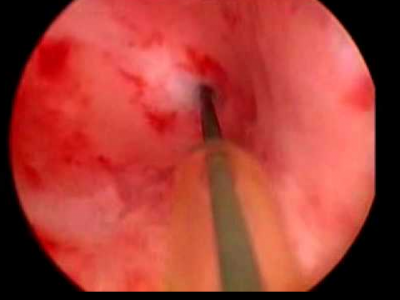The antimülleriana hormone (amh): utility to study the fertility
The antimulleriana hormone (AMH) is a marker used in assisted reproduction to evaluate the ovarian reserve and, therefore, the state of women's fertility. By analyzing the levels of this hormone, we can predict the chances of a patient getting pregnant. High values ??of AMH are related to good results in these techniques and are usually accompanied by low levels of FSH. With age, the ovarian reserve decreases, so the AMH also decreases.
This test helps to know which treatment of assisted reproduction is the most indicated for each patient and thus improve the results. Depending on this analysis and the rest of the clinical history, it will be recommended that an artificial insemination, in vitro fertilization (IVF) or ovodonation be performed.
Below you have an index with all the points that we will discuss in this article.
Index
The antimülleriana hormone (AMH): utility to study the fertility- 1. What is the anti-Müllerian hormone?
- 2. AMH in women and fertility
- 2.1. When to do the analysis?
- 2.2. AMH values ??by age
- 3. Antimüllerian hormone in men
- 4. Price of the analysis
- 5. Questions from users
- 5.1. If I have a low AMH, can I get a natural pregnancy?
- 5.2. I have a high AMH, but I can not get pregnant. What's happening to me?
What is the antimüllerian hormone?
AMH is a protein present in both men and women, but with different functions and locations. Its main role occurs during embryo-fetal development, since it is responsible for the sexual differentiation is given correctly.
In men, this hormone prevents the formation of Müller's ducts, hence its name. These structures are the precursors of the uterus and the fallopian tubes in the female fetal development. In males, their levels remain high until adolescence, but in adulthood they remain low.
In the case of women, it is the absence of this hormone that allows the female reproductive system to form. It will begin to express itself a few weeks later, when there are already ovarian follicles.
In adulthood, it is produced exclusively by the somatic cells that surround the gametes. In males, it is synthesized in Sertoli cells. In women, in the granulosa cells of the ovarian follicles. This close relationship with the gametes makes it proposed as a biological marker of fertility, especially in the case of women.

AMH in women and fertility
As we have already mentioned, AMH is postulated as a hormonal marker of ovarian aging and, therefore, is potentially useful for evaluating the ovarian reserve of women.
It has been seen that there is a correlation between the values ??of this protein and the degree of ovarian response to ovarian stimulation, sometimes more accurate than basal levels of FSH. Therefore, it may be useful to better predict the success of assisted reproduction treatments and to be able to make a more accurate indication of which of these techniques is the most appropriate for each patient.
This hormone also allows us to better study the physiology of fertility, because its levels have also been related to the quality of the ovules. It is said that only healthy follicles, which will give a place to a quality oocyte, are capable of producing AMH.
In addition, in women with polycystic ovaries, AMH levels are higher and decrease more slowly with increasing age. This suggests that they have a more delayed ovarian aging.

When to do the analysis?
AMH is synthesized mainly by the growing follicles, before the selection of the dominant follicle occurs. This means that AMH values ??are independent of the menstrual cycle and their serum levels do not vary throughout the menstrual cycle. Therefore, the day of the cycle in which it is analyzed does not influence the results obtained, which makes it especially useful.
However, before performing any cycle of assisted reproduction, other hormones are often analyzed that do vary throughout the menstrual cycle, such as estradiol or FSH.
Therefore, it is more practical to perform a single hormonal blood test at baseline, which are the first days of the cycle: 3-5 days after the onset of menstruation.
AMH values ??by age
Another advantage of this hormonal determination is that its reference values ??are well defined and that its measurement is useful in a wide range of patients, from those likely to have a low response to those who are susceptible to ovarian hyperstimulation.
There are several methods to detect antimulleriana hormone. This means that, although the reference values ??of each method are clear, it is very difficult to compare these levels between different techniques. The interpretation of the results of each patient should be made taking into account the cut-off values ??of each test.
However, there is consensus on some values, although they may vary slightly from one method to another:
- Low values: less than 0.5 - 1 ng / ml. They suggest a low ovarian reserve and a high risk of a low response to stimulation.
- Normal values: between 0.7 and 3.5 ng / ml. If you have those levels, the ovarian reserve is good.
- High values: levels greater than 3.5 ng / ml. They should make us suspect that the patient may suffer an ovarian hyperstimulation syndrome if the stimulation is not controlled correctly.
We see that the levels of AMH are directly proportional to the number of antral follicles and, therefore, to the ovarian reserve. However, the FSH values ??vary inversely: the lower the ovarian reserve, the higher the FSH levels. Therefore, the latter increase with age, while the rest decrease.
Correlation between AMH levels, antral follicle count, FSH and ovarian reserveFrom menopause, the presence of this protein in women will decrease considerably.
It is recommended that the results of this analysis be complemented by a recount of the antral follicles by a transvaginal ultrasound.
Antimüllerian hormone in men
Although the use of this test in men is not as widespread, AMH is a good marker of the function of Sertoli cells. These are involved in the formation of sperm (spermatogenesis) and, therefore, allows us to evaluate testicular function.
In men who suffer azoospermia, the determination of this hormone can help to know if there are sperm in the testicle. These could be extracted by biopsy and used in an intracytoplasmic sperm microinjection (ICSI). However, it is not as effective a predictor as in the case of women and better results are obtained through FSH analysis.
Analysis price
The determination of AMH in blood is a test that can be done within the feminine or separate fertility study. Prices can vary greatly depending on the clinic and the laboratory where it is done.
In general, female fertility studies cost ? 120-450 and include a vaginal ultrasound and hormonal analysis. The most expensive include the AMH analysis. In case of only performing the AMH test, the price is around 50-80 ?.
Assisted Reproduction ORG has agreements with clinics for you to do your fertility study at the best price. In addition, the first visit is free so you can go to inform you without obligation.
Some of our discounts also include the hormone AMH. You can see them here: Discounts in female fertility studies.
Questions from users
If I have a low AMH, can I get a natural pregnancy?
Low AMH values ??are indicative of having a low ovarian reserve. However, it only reports that the chances of getting pregnant are reduced, not that it is impossible. It will depend on the exact value obtained and other factors, such as the seminal quality of the couple, the permeability of the tubes, the endometrial receptivity ...
I have a high AMH, but I can not get pregnant. What's happening to me?
Having high levels of this hormone indicates that the ovarian reserve is good, but you can have other alterations that are affecting your fertility. The most advisable in these cases is to perform a complete sterility study to analyze what factors may be preventing you from getting pregnant.
Comments
Post a Comment